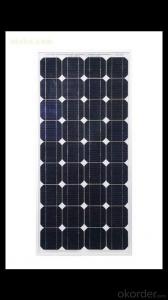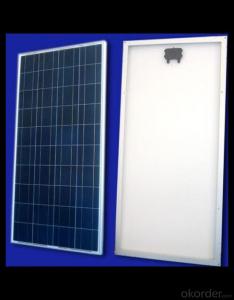310W Direct Factory Sale Price 260-300Watt Solar Panels
- Loading Port:
- China main port
- Payment Terms:
- TT OR LC
- Min Order Qty:
- 10000 watt
- Supply Capability:
- 100000 watt/month
OKorder Service Pledge
OKorder Financial Service
You Might Also Like
Item specifice
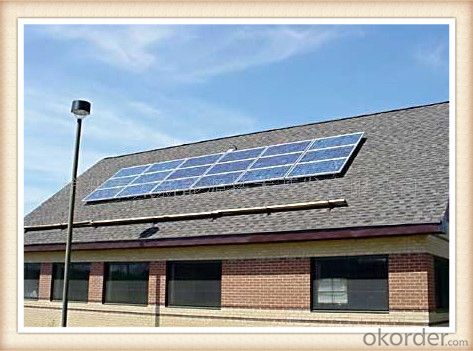
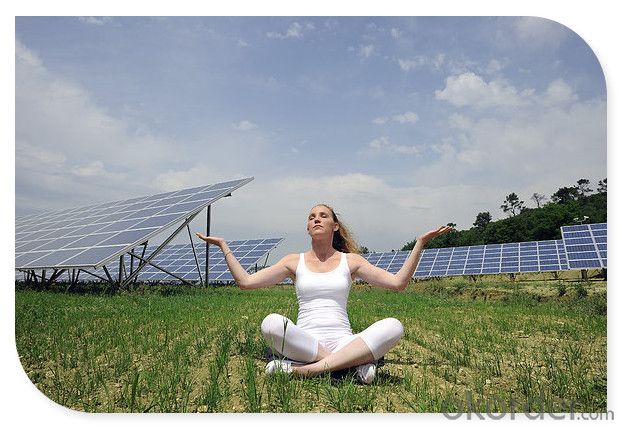
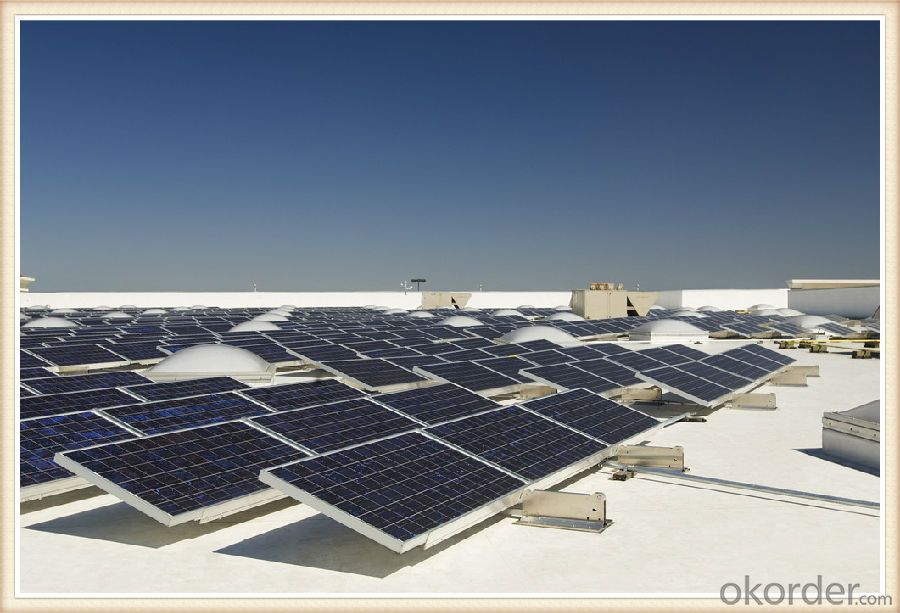
Solar Module Introduction
Solar modules use light energy (photons) from the sun to generate electricity through the photovoltaic effect. The majority of modules use wafer-based crystalline silicon cells or thin-film cells based on cadmium telluride or silicon. The structural (load carrying) member of a module can either be the top layer or the back layer. Cells must also be protected from mechanical damage and moisture. Most solar modules are rigid, but semi-flexible ones are available, based on thin-film cells. These early solar modules were first used in space in 1958.
Electrical connections are made in series to achieve a desired output voltage and/or in parallel to provide a desired current capability. The conducting wires that take the current off the modules may contain silver, copper or other non-magnetic conductive transition metals. The cells must be connected electrically to one another and to the rest of the system. Externally, popular terrestrial usage photovoltaic modules use MC3 (older) or MC4 connectors to facilitate easy weatherproof connections to the rest of the system.
Specification
Model Type | |
Peak Power-Pmax(W) | 5-200W |
Open Circuit Voltage-Voc(V) | 44.2 |
Maximum Power Voltage-Vmp(V) | 36 |
Short Circuit Current-Isc(A) | 5.4 |
Maximum Power Current-Imp(A) | 5 |
Maximum System Voltage | 1000V DC |
Maximum Series Fuse Rating | 10A |
Power Tolerance | -1~+3% |
Temperature Coefficients of Pmax | -0.45%/℃ |
Temperature Coefficients of Voc | -0.348%/℃ |
Temperature Coefficients of Isc | 0.031%/℃ |
Nominal Operating Cell Temperature | 44.5±2℃ |
Standard Testing Condition(STC) | Irradiance:1000W/m²;Temperature:25℃;AM=1.5 |
Qualification Test Parameters | |
Operating Temperature | -40℃~+85℃ |
Storage Temperature | -40℃~+85℃ |
Pressure Bearing | ≥5400Pascal/m² |
Wind Bearing | ≥5400Pascal/m² |
Mechanical Characteristics | |
Cell Size | Mono 125*125mm±0.5 |
No.of Cells | 72pcs(6*12) |
Dimension | 1580*808*40mm |
Weight | 15.5Kg |
Glass | 3.2mm High Transmission,Low Iron |
Frame | Anodized Aluminum Alloy |
Junction Box | IP65Rated |
Internal Diodes | 3 Bypass Diodes |
Cable | 1*4.0mm² Length 900mm |
Images
Packing & Shipping:
We have rich experience on how to pack the panels to make sure the safety on shipment when it arrives at the destination.
The normal size is packed by 25pcs/ carton / pallet. Paper carton for FCL shipping and wood carton for LCL shipping.
Features
1.High reliability with guaranteed -3% to +5% power output tolerance, ensuring return on investment
2.High conversion efficiency based on leading innovative photovoltaic technologies
3.Withstands high wind-pressure and snow load, and extreme temperature variations
4.Attractive appearanceUnique frame design, high mechanical strength, and easy Installation
Warranty:
For c-Si panel: 25years output warranty for no less than 80% of performance, 10 years output warranty for no less than 90% of performance. Free from material and workmanship defects within 5 years.
For a-Si panel: 20 years output warranty for no less than 80% of performance, 10 years output warranty for no less than 90% of performance. Free from material and workmanship defects within 2 years.
•100% product quality protection
•100% on-time shipment protection
•100% payment protection for your covered amount
FAQ:
(1)What price for each watt?
It depends on the quantity, delivery date and payment terms.
(2)What is your size for each module? Can you tell me the Parameter of your module?
We have different series of panels in different output, both c-Si and a-Si. Please take the specification sheet for your reference.
(3)Can you provide the peripheral products of the solar panels, such as the battery, controller, and inverter? If so, can you tell me how do they match each other?
Actually we are only manufacturer of solar panels, but we could try to source them for you in China if you need. We could provide you an optimal system design to instruct you how to install.
(4)Do you have the CE, TUV, UL Certification?
We’ve already passed all the tests, and any certificate is available.
(5)Have you ever sold your products to companies in my country?
Of course, we have customers in all general PV markets, but I think we should expand our market share along with the market growth.
(6)When did your company set up? You are a new company, how can I believe your quality?
We entered into Solar PV industry in 2005, now we have several plants in manufacturing of a-Si and c-Si panels, and our capacity is 220MW per year. Till now we have already passed all the tests by authorized laboratories, e.g. TUV, VDE, UL.
(7)Can you help us install the module if we cooperate with you?
We haven’t entered into installation sector, but we have the plan in near future.
(8) How do you pack your products?
We have rich experience on how to pack the panels to make sure the safety on shipment when it arrives at the destination.
(9) Can you do OEM for us?
Yes, we can.
(10)Can we visit your factory?
Surely, I will arrange the trip basing on your business schedule.
- Q:Most solar panels (the flat ones that go onto roofs of houses) reject electricity produced by the panels if they are too low in voltage. For example, on a cloudy day, although the panels may still get some sunlight to produce some electricity, it is rejected because its too low in voltage. So, does anyone have any ideas?
- I okorder /
- Q:The average solar panel produces 0% of the energy that is put into it. What is happening to the other 90%? Is it being reflected or is it being obsorbed by materials that are not a part of the solar cell? Is it possible to one day have near 00% efficient solar cell technology?
- Sunlight comes in many frequencies, that's why it's white. Solar Photovoltaics require a photon to displace an electron from a semiconductor and that only happens at one frequency depending on what the semiconductor material is, therefore only one exact frequency gets turned into power. They are working on using organic dyes or quantum dots to absorb the energy in different frequencies and re-emit the energy in the desired frequency. They also are working on using multiple semiconductor materials to try and capture more frequencies. The rest of the energy becomes heat which also reduces the efficiency of the solar cells. The lab record for solar photovoltaics is 42.8% efficiency and quantum dots promises to be 65% to 75% efficient. Keep in mind that fossil fuels are based on energy collected by photosynthesis over millions of years. The efficiency of photosynthesis with modern plants is about 0.5% and the theoretical maximum efficiency of photosynthesis is 6.6%. All of our current energy use is based upon a small fraction of 0.5% efficiency over millions of years.
- Q:Can solar panels be installed on a high-rise building?
- Yes, solar panels can be installed on a high-rise building. In fact, high-rise buildings offer great potential for solar panel installations due to their large surface area and access to sunlight. However, it is important to consider factors like structural integrity, shading, and local regulations while designing and installing solar panels on high-rise buildings.
- Q:How long does it take to recoup the cost of solar panels through energy savings?
- The time it takes to recoup the cost of solar panels through energy savings varies depending on factors such as the cost of the panels, the amount of sunlight in the area, the energy consumption of the household, and available government incentives. On average, it can take anywhere between 5 to 20 years to recoup the initial investment. However, with technological advancements and decreasing costs of solar panels, this payback period is steadily decreasing, making solar energy an increasingly attractive and financially viable option for many homeowners.
- Q:Can solar panels be installed in areas with high levels of saltwater exposure?
- Yes, solar panels can be installed in areas with high levels of saltwater exposure. However, it is important to consider the potential effects of corrosion on the panels and their supporting structures. Proper maintenance and regular cleaning of the panels can help mitigate the impact of saltwater exposure and ensure optimal performance and longevity. Additionally, selecting corrosion-resistant materials and utilizing protective coatings can further enhance the durability of solar panels in such environments.
- Q:do solar panels create electricity from the ultraviolet light created from the sun? because they only have an efficientcy of like 8% and this scientist found out a way to collect the visible light also, and he says the solar panel could have an effeciency of up to 80%! so my question really is, do solar penels creat electricity from heat? do you know of anything that can?
- They create electricity from light energy provided by the sun....
- Q:) what is absolutely needed to hook up a solar panel to grid tie, what permits and/or inspectors are needed?2) if we know how many KWH's we use per month, do we just divide by number of hours per month to find out average KW usage?3) what is an estimated ratio of DC to AC transformation/convertion @ 30 C?4) do the solar panel voltages have to be the same? what would happen if the voltage going into the house is greater/lower than that of the house's defualt voltage5) for added chance of getting 0 pts add some contrators that do business in ohio for installing solar panels or sell them
- The okorder The reference section has all the formulas you are looking for and there is a list of dealers by state, plus various state rebate information. Yes, you can hook up different panels to the same system. There are special controllers that regulate the voltage. I'm more of a hands on nuts and bolts guy so I can't help you with the formulas and engineering explanations. Another great place to get information is Home Power Magazine. You can get the issues online or in print. Thanks for going solar!
- Q:I am building a solar panel I have wired in series 36 .5 volt solar cells to produce 8 volts I have another panel that has 34 .5 volt solar cells to produce 7 volts. Any issues with wiring these 2 arrays in Parallel? I.E. would the smaller array take usable power away from the larger array?
- Hmmm (8v -7v)/ 0 ohms .... shakes head....
- Q:I need a solar panel for my laptop as i am going camping in the desert, and i need my laptop. There are two choices of solar panels, One is 0 watts and 2 V and maximum power current 0.56 amps. The other one is 2 watts, 2 V and no mention of current. My laptop plug says input 00-240V and .5A and then output 5V-5A. Which one should i get for my laptop. If there are other choices please tell me ill look them up on OKorder.Thanks
- I'm afraid neither of these panels will do much for charging or running your laptop. If the power brick is supposed to emit 5 volts at 5 amps, that's 75 watts. Neither of those panels provides enough voltage and the power output is obviously far too small. The capabilities of solar power are vastly overestimated for small panels. Sunlight is limited to about kilowatt per square meter under ideal conditions (summer time, clear blue sky, for a few hours around noon in the US southwest). But consumer panels top out at about 5% efficiency, so your limit is 50 watts per square meter - in other words you would need about half a square meter, or about six square feet, of panel to provide 75 watts. And even under ideal conditions you will only get that much for a few hours each day. Also, the panel's voltage output is not regulated, so even if you find a panel that emits 5 volts (this would actually have to be made up of groups of 30 cells in series, as they emit half a volt each at most) you can't just connect the panel output into your laptop's DC in. You'd need a regulated DC-to-DC supply, and since that is not 00% efficient it will cost a bit of the power... now you need even more panel area. All in all, not really a practical thing to carry along on a camping trip.
- Q:I have a small marine solar panel on my boat It came with the boat. I want to make sure it is working before I connect it. With a volt meter It is only reading .2 volts dc. I would think it should be 2-5 volts?
- If it's only reading 0.2 volts, then the panel is burned out. What you can do is look for a nameplate on the panel, then try to look it up on the internet. Hopefully that will say what the voltage is supposed to be. You are right in that a panel intended to charge a 2-volt battery should read about 8 volts open circuit out in daylight, even if it isn't pointing straight at the sun. Is it a flexible rubber panel? Those are notorious for dying after just a couple years.
1. Manufacturer Overview |
|
|---|---|
| Location | |
| Year Established | |
| Annual Output Value | |
| Main Markets | |
| Company Certifications | |
2. Manufacturer Certificates |
|
|---|---|
| a) Certification Name | |
| Range | |
| Reference | |
| Validity Period | |
3. Manufacturer Capability |
|
|---|---|
| a)Trade Capacity | |
| Nearest Port | |
| Export Percentage | |
| No.of Employees in Trade Department | |
| Language Spoken: | |
| b)Factory Information | |
| Factory Size: | |
| No. of Production Lines | |
| Contract Manufacturing | |
| Product Price Range | |
Send your message to us
310W Direct Factory Sale Price 260-300Watt Solar Panels
- Loading Port:
- China main port
- Payment Terms:
- TT OR LC
- Min Order Qty:
- 10000 watt
- Supply Capability:
- 100000 watt/month
OKorder Service Pledge
OKorder Financial Service
Similar products
New products
Hot products
Hot Searches
Related keywords
